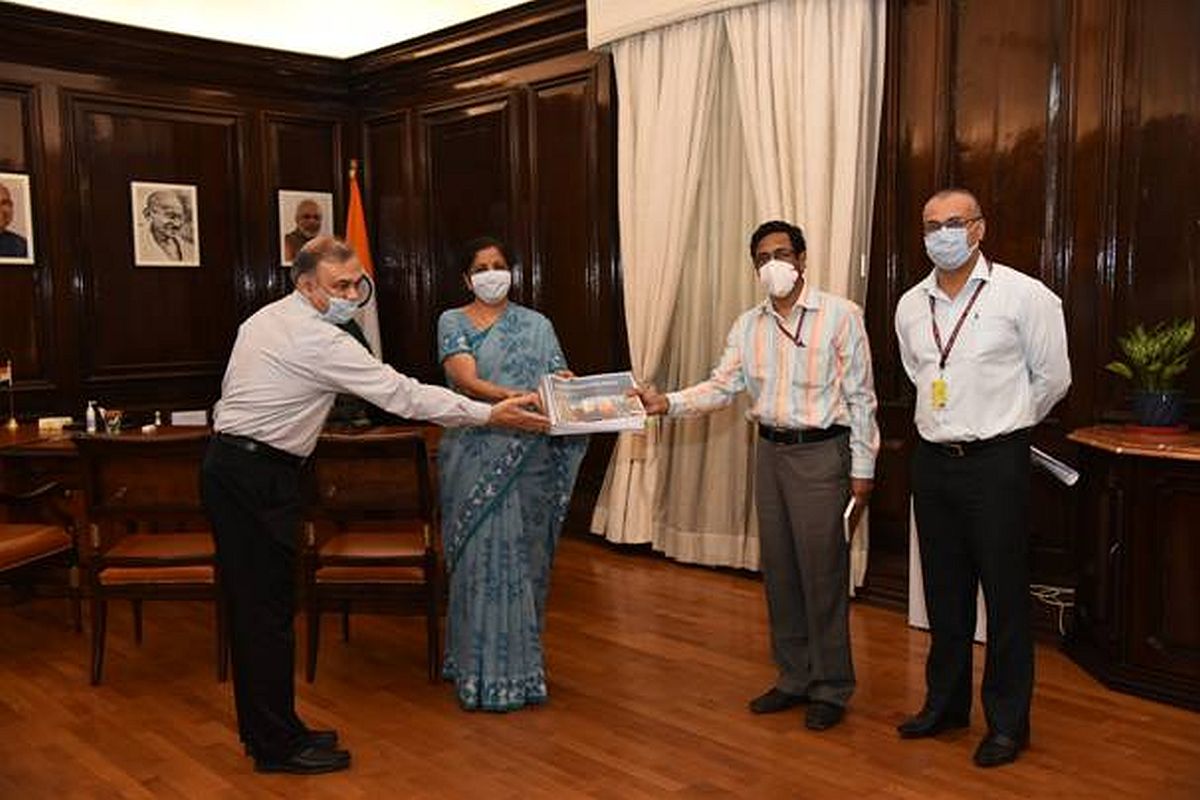Jahan-e-Khusrau: PM Modi to attend 25th sufi music festival in Delhi
Jahan-e-Khusrau, an international Sufi music festival, celebrates its 25th anniversary in Delhi with global artists honoring Amir Khusrau's legacy.
NIP aims to improve project preparation, attract investments (both domestic and foreign) into infrastructure, and will be crucial for the target of becoming a $5 trillion economy by FY 2025.

The Task Force on National Infrastructure Pipeline (NIP) has submitted its final report for the Financial Year 2019 to 2025 to Union Minister Nirmala Sitharaman. (Photo: PIB)
The Task Force on National Infrastructure Pipeline (NIP) has submitted its final report for the Financial Year 2019 to 2025 to Union Finance Minister Nirmala Sitharaman.
NIP is a first-of-its-kind, whole-of-government exercise to provide world-class infrastructure across the country, and improve the quality of life for all citizens.
Advertisement
It aims to improve project preparation, attract investments (both domestic and foreign) into infrastructure and will be crucial for target of becoming a $5 trillion economy by FY 2025.
Advertisement
It is to be noted that the summary report of the task force on NIP was submitted by the Finance Minister Nirmala Sitharaman on December 31, 2019.
During her budget speech, Finance Minister had announced that Rs 100 lakh crore would be invested on infrastructure over the next five years.
Prime Minister Narendra Modi in his Independence Day speech had said, “For development of modern infrastructure, an amount of Rs. 100 lakh crore has been earmarked for this period which will create new job opportunities besides improving the living standards.”
The Final Report of NIP Task Force is projecting total infrastructure investment of Rs 111 lakh crore during the period FY 2020-25 in light of additional/amended data provided by Central Ministries/State Governments since the release of summary NIP Report. The Final Report of the NIP task force is in three volumes.
“Out of the total expected capital expenditure of Rs 111 lakh crore, projects worth Rs 44 lakh crore (40% of NIP) are under implementation, projects worth Rs 33 lakh crore (30%) are at conceptual stage and projects worth Rs 22 lakh crore (20%) are under development Information regarding project stage are unavailable for projects worth Rs 11 lakh crore (10%). Sectors such as energy (24%), roads (18%), urban (17%) and railways (12%) amount to around 71% of the projected infrastructure investments in India. The Centre (39%) and States (40%) are expected to have an almost equal share in implementing the NIP in India, followed by the private sector (21%),” Ministry of Finance said.
The NIP has been made on a best effort basis by aggregating the information provided by various stakeholders including line ministries, departments, state governments and private sector across infrastructure sub-sectors identified in the Harmonised Master List of Infrastructure.
To draw up the NIP, a bottom-up approach was adopted wherein all projects (Greenfield or Brownfield, Under Implementation or under conceptualisation) costing greater than Rs 100 crore per project were sought to be captured.
The Task Force also recommended setting up of three committees in its report. A committee to monitor NIP progress and eliminate delays, a Steering Committee in each Infrastructure ministry level for following up implementation and a Steering Committee in DEA for raising financial resources for the NIP were suggested.
Advertisement